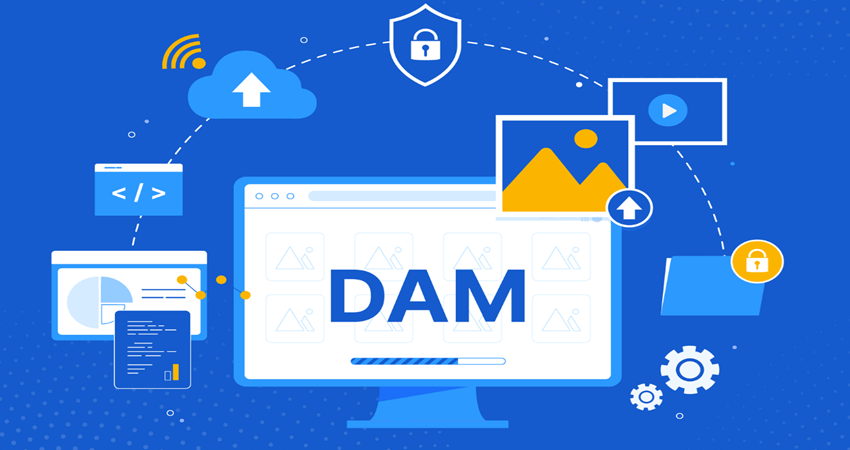In today’s digital-first world, businesses are constantly grappling with an ever-growing volume of digital assets. From images and videos to documents and audio files, these assets form the backbone of modern marketing, branding, and communication strategies. As organizations strive to manage this digital deluge efficiently, a crucial question arises: Do digital asset management (DAM) systems need a database? This comprehensive exploration will delve into the intricacies of DAM systems, the role of databases, and whether they are indispensable for effective digital asset management.

Understanding Digital Asset Management Systems
Before we dive into the database question, it’s essential to understand what digital asset management systems are and why they’re crucial in today’s business landscape.
What is a Digital Asset Management System?
A digital asset management system is a software solution designed to store, organize, retrieve, and distribute digital assets. These systems serve as a centralized hub for all digital content, enabling businesses to:
- Store assets securely
- Organize files with metadata and tags
- Search and retrieve assets quickly
- Control access and usage rights
- Collaborate on asset creation and modification
- Distribute assets across various channels
The Importance of DAM in Modern Business
As businesses increasingly rely on digital content for marketing, sales, and communication, the need for efficient management of these assets has become paramount. DAM systems offer numerous benefits, including:
- Improved productivity through faster asset retrieval
- Enhanced brand consistency across all platforms
- Better collaboration among team members
- Reduced risk of copyright infringement
- Cost savings by eliminating duplicate asset creation
- Improved asset lifecycle management
Given these advantages, it’s clear why DAM systems have become essential tools for businesses of all sizes. But the question remains: Do these systems require a database to function effectively?
The Role of Databases in Digital Asset Management
To answer this question, we need to examine the role that databases play in the context of digital asset management.
What is a Database?
A database is an organized collection of structured information or data, typically stored electronically in a computer system. Databases are designed to efficiently manage, update, and retrieve large amounts of information.
Traditional Database Systems in DAM
Historically, many DAM systems have relied on traditional relational database management systems (RDBMS) like MySQL, PostgreSQL, or Oracle. These databases excel at handling structured data and provide several advantages:
- Efficient Data Retrieval: SQL queries allow for fast and precise data retrieval.
- Data Integrity: RDBMS ensure data consistency and reduce redundancy.
- Scalability: They can handle large volumes of data and concurrent users.
- Security: Robust access control and encryption features protect sensitive information.
The Case for Databases in DAM Systems
There are compelling reasons why many DAM systems incorporate databases:
- Metadata Management: Databases excel at storing and managing metadata associated with digital assets, such as file names, creation dates, author information, and custom tags.
- Search Functionality: Advanced search capabilities often rely on database indexing to deliver fast and accurate results.
- User Management: Databases can efficiently handle user accounts, permissions, and access controls.
- Version Control: Tracking changes and maintaining different versions of assets is more manageable with a database system.
- Analytics and Reporting: Databases facilitate the collection and analysis of usage data, helping organizations make informed decisions about their digital assets.
Given these advantages, it might seem that databases are indispensable for DAM systems. However, the evolving landscape of data storage and management has introduced alternative approaches that challenge this assumption.
Alternatives to Traditional Databases in DAM Systems
As technology advances, new solutions have emerged that offer alternatives to traditional database-centric DAM systems.
File System-Based DAM
Some DAM solutions utilize the file system of the operating system to store and organize digital assets. This approach has several advantages:
- Simplicity: File system-based DAM can be easier to set up and maintain.
- Direct Access: Assets can be accessed directly through the file system, potentially improving performance for certain operations.
- Compatibility: It’s often easier to integrate with existing workflows and tools that rely on file system access.
However, file system-based DAM may struggle with scalability and advanced search capabilities compared to database-driven systems.
NoSQL Solutions
NoSQL databases have gained popularity as alternatives to traditional relational databases. These systems, such as MongoDB or Couchbase, offer:
- Flexibility: They can handle unstructured and semi-structured data more easily.
- Scalability: Many NoSQL solutions are designed for horizontal scaling, which can be advantageous for large-scale DAM implementations.
- Performance: For certain types of queries and data access patterns, NoSQL databases can outperform traditional RDBMS.
Cloud-Native Storage Solutions
With the rise of cloud computing, new storage solutions have emerged that blur the line between file systems and databases. Services like Amazon S3, Google Cloud Storage, or Azure Blob Storage offer:
- Scalability: These solutions can handle massive amounts of data with ease.
- Cost-Effectiveness: Pay-as-you-go pricing models can be more economical for some organizations.
- Built-in Features: Many cloud storage solutions offer features like versioning, access control, and metadata management out of the box.
Hybrid Approaches
Some modern DAM systems adopt a hybrid approach, combining elements of traditional databases, file systems, and cloud storage. This approach allows organizations to leverage the strengths of each technology while mitigating their weaknesses.
Factors to Consider When Choosing a DAM System
When deciding whether a database is necessary for your DAM system, consider the following factors:
- Scale of Operations: Large enterprises with millions of assets may benefit more from database-driven systems, while smaller organizations might find file system-based solutions sufficient.
- Type of Assets: The nature of your digital assets (e.g., predominantly images vs. a mix of file types) can influence the best storage and management approach.
- Search Requirements: If advanced search capabilities are crucial, a database-driven system might be more appropriate.
- Integration Needs: Consider how the DAM system needs to integrate with other tools and workflows in your organization.
- Performance Requirements: Evaluate the speed and responsiveness needed for asset retrieval and management tasks.
- Compliance and Security: Some industries have strict regulations regarding data storage and access, which may influence the choice between database and non-database solutions.
- Budget and Resources: Database-driven systems often require more specialized knowledge to maintain and may have higher associated costs.
The Future of DAM: Trends and Innovations
As we look to the future, several trends are shaping the evolution of digital asset management systems:
AI and Machine Learning
Artificial intelligence and machine learning are increasingly being integrated into DAM systems to automate tasks like:
- Auto-tagging of assets
- Image and video recognition
- Content recommendation
- Predictive analytics
These technologies often rely on sophisticated data processing, which may influence the role of databases in future DAM systems.
Blockchain for Digital Rights Management
Some DAM providers are exploring blockchain technology to enhance digital rights management and asset tracking. This could introduce new data storage and management paradigms that go beyond traditional databases.
Edge Computing and DAM
As edge computing gains traction, some organizations are exploring distributed DAM solutions that push asset storage and processing closer to the point of use. This trend could impact how databases are used in DAM systems, potentially favoring more distributed data storage solutions.
Conclusion: Do DAM Systems Need a Database?
After examining the various aspects of digital asset management systems and the role of databases, we can conclude that while databases are not strictly necessary for all DAM implementations, they remain a crucial component for many robust and scalable solutions.
The answer to whether a DAM system needs a database ultimately depends on the specific requirements of the organization. For some, a simple file system-based approach may suffice. For others, a full-fledged database-driven system might be essential to meet complex needs and future scalability.
As the digital landscape continues to evolve, we’re likely to see further innovations in how digital assets are stored, managed, and accessed. The key for organizations is to carefully assess their needs, consider future growth, and choose a DAM solution that provides the right balance of functionality, performance, and scalability—whether that includes a traditional database or leverages newer technologies.
Ultimately, the goal of any DAM system is to empower organizations to manage their digital assets efficiently and effectively. Whether achieved through databases, file systems, cloud storage, or hybrid solutions, the most important factor is that the chosen system meets the organization’s unique requirements and enables them to harness the full potential of their digital assets.
| Read More Topics |
| How to delete a task row in javascript? |
| Quantum computing: The next frontier in information technology |
| Which was the first industrial robot? |





